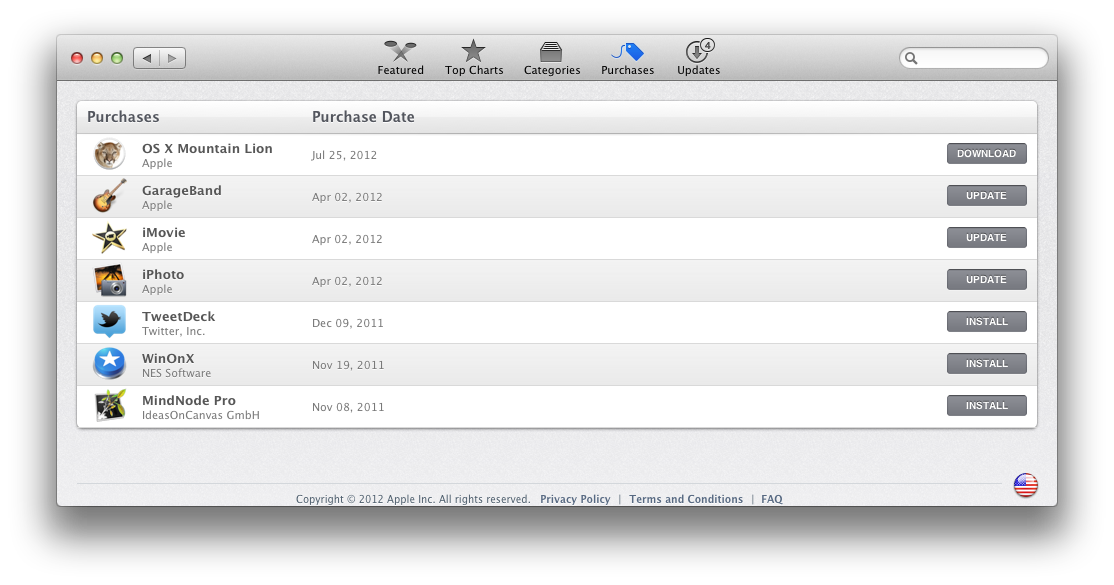
- BOOTABLE USB MAC OS X MOUNTAIN LION HOW TO
- BOOTABLE USB MAC OS X MOUNTAIN LION FOR MAC
- BOOTABLE USB MAC OS X MOUNTAIN LION INSTALL
- BOOTABLE USB MAC OS X MOUNTAIN LION SOFTWARE
- BOOTABLE USB MAC OS X MOUNTAIN LION PASSWORD
But the truth is, the process of creating a bootable installer for macOS is pretty straightforward and takes just a few clicks of the mouse. You might think that creating such a drive is complicated and something that only a tech-savvy might handle.
BOOTABLE USB MAC OS X MOUNTAIN LION INSTALL
Whether you want to dual-boot your Mac, have to install the new macOS version on multiple computers (and don’t want to spend hours doing it), or need to reinstall the operating system on your Mac, a bootable USB installer has you covered.
BOOTABLE USB MAC OS X MOUNTAIN LION HOW TO

BOOTABLE USB MAC OS X MOUNTAIN LION SOFTWARE
Top 5 Best Mac Disk Repair Software in 2022 (That Actually Worth Your Time!).
BOOTABLE USB MAC OS X MOUNTAIN LION FOR MAC
BOOTABLE USB MAC OS X MOUNTAIN LION PASSWORD
When prompted, type your administrator password and press Return again.If it has a different name, replace MyVolume in these commands with the name of your volume. These assume that the installer is still in your Applications folder, and MyVolume is the name of the USB flash drive or other volume you're using. Type or paste one of the following commands in Terminal.Open Terminal, which is in the Utilities folder of your Applications folder.Make sure that it has at least 12GB of available storage and is formatted as Mac OS Extended. Connect the USB flash drive or other volume that you're using for the bootable installer.Use the 'createinstallmedia' command in Terminal You will create the bootable installer from this app, not from the disk image or. It installs an app named Install OS X El Capitan into your Applications folder. On a Mac that is compatible with El Capitan, open the disk image and run the installer within, named InstallMacOSX.pkg. Now follow the on screen instructions to install OS X Lion.Įl Capitan downloads as a disk image.Choose the USB Flash Drive from there to boot.Hold down the alt/Option key on your keyboard when you hear the OS X start-up sound.Reboot your Mac with the USB drive plugged in.This will restore the Lion 10.7 image to the USB Flash drive.Make sure you have chosen the right USB drive, you don’t want to format the wrong drive and then click on Restore button.Then Click and Drag the USB drive from the left pane and drop it in the Destination field.Click and drag the IMac OS X Install ESD from the left pane and drop it in the Source field.Select the plugged USB from the Left pane on the Disk Utility and then go to Restore tab.Double-click on InstallESD.dmg (that you copied onto your Mac desktop) to mount the Lion disk image (mounted InstallESD.dmg should appear on Disk Utility application and desktop).Now click on Apply at the bottom right to start formatting. Select GUID Partition Table and click OK. Now click on Options button at the bottom.Input a name for the USB and Choose Mac OS Extended (Journaled).Select 1 Partition from the Volume Scheme dropdown menu.Select the plugged USB from the Left pane on the Disk Utility and click on Partition tab.

Plug the USB flash drive into your Mac.Before formatting, If you have any data on your USB drive then save it.Locate the file named: InstallESD.dmg and copy it on your desktop. Now go to Contents > SharedSupport directory.


 0 kommentar(er)
0 kommentar(er)
